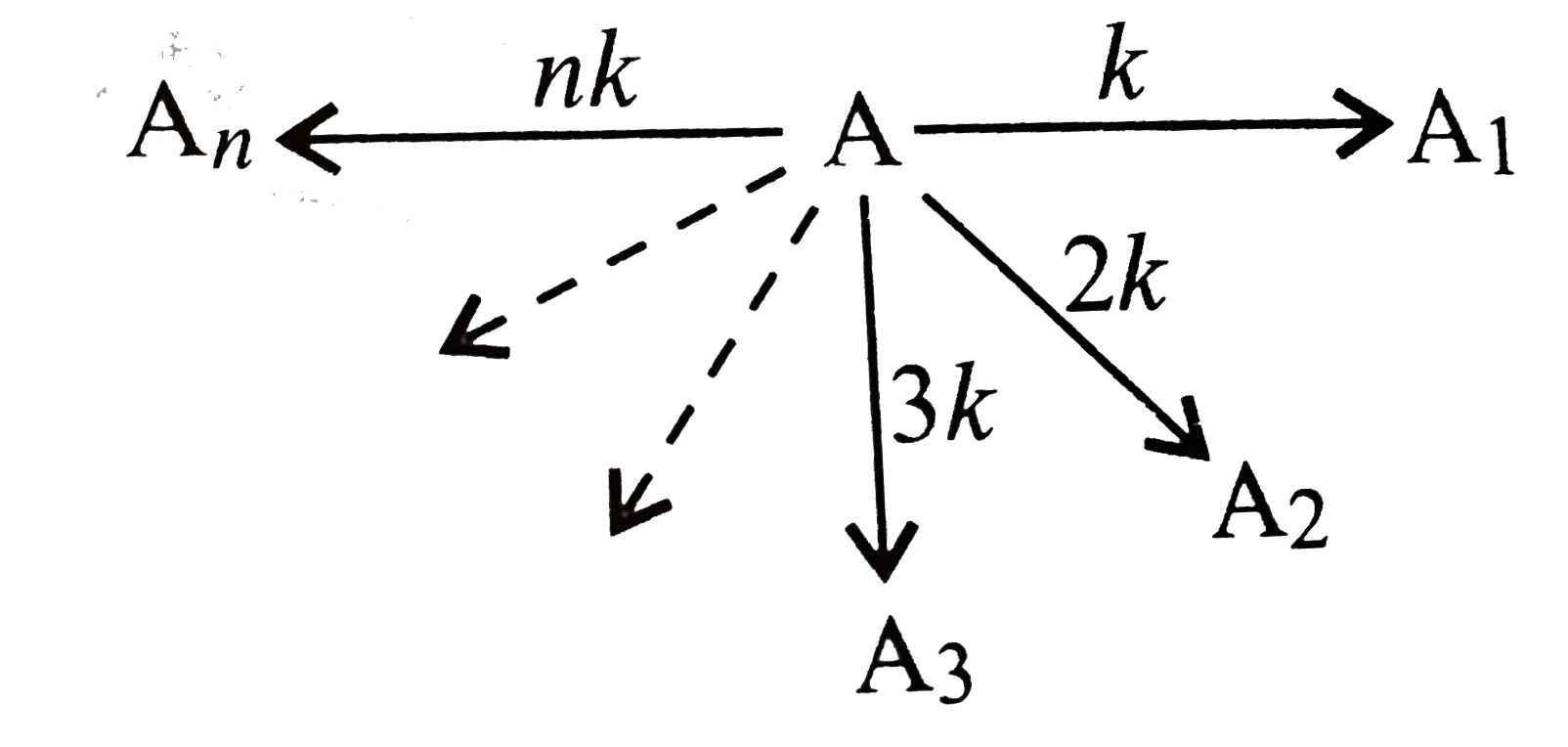(i) What does ∣∣∣dvdt∣∣∣ and d|V|dt represent ?
(ii) Can these be equal ?
(iii) Can d∣Vdt=0 while ∣∣∣dVdt≠0 ?
(iv) Can d|V|dt≠0 while ∣∣∣dvdt∣∣∣=0 ?
Let's break down the question step by step:
(i) What does ∣∣∣dvdt∣∣∣ and d|V|dt represent?
1. Understanding the Terms:
- dvdt: This represents the acceleration of the object. Since velocity is a vector, dv is a change in velocity over a change in time, which gives us acceleration.
- ∣∣∣dvdt∣∣∣: This represents the magnitude of the acceleration. It tells us how fast the speed of the object is changing, regardless of the direction.
- |V|: This represents the magnitude of the velocity, or simply the speed of the object.
- d|V|dt: This represents the rate of change of speed with respect to time. It tells us how the speed of the object is changing over time.
(ii) Can these be equal?
2. Condition for Equality:
- The two quantities ∣∣∣dvdt∣∣∣ and d|V|dt can be equal only in one specific case: when the motion is one-dimensional. In one-dimensional motion, the direction of the velocity does not change, which means the acceleration (change in velocity) and the rate of change of speed are aligned, allowing them to be equal.
(iii) Can d|V|dt=0 while ∣∣∣dVdt≠0?
3. Analyzing the Scenario:
- Yes, this can happen. For example, consider an object moving in a circular path at a constant speed. Here, the speed (magnitude of velocity) does not change, so d|V|dt=0. However, the velocity vector is changing direction, which means dvdt is not zero. Thus, ∣∣∣dvdt∣∣∣ can be non-zero even when d|V|dt=0.
(iv) Can d|V|dt≠0 while ∣∣∣dvdt∣∣∣=0?
4. Examining the Possibility:
- No, this scenario is not possible. If the magnitude of velocity (speed) is changing with time, then d|V|dt cannot be zero. If ∣∣∣(dvdt)∣∣∣=0, it implies that the velocity is constant (no change in velocity), which means that the speed cannot be changing either. Therefore, if d|V|dt≠0, then ∣∣∣(dvdt)∣∣∣ must also be non-zero.
Summary of Answers:
1. ∣∣∣dvdt∣∣∣ represents the magnitude of acceleration, and d|V|dt represents the rate of change of speed.
2. They can be equal only in one-dimensional motion.
3. Yes, d|V|dt=0 can occur while ∣∣∣dvdt∣∣∣≠0.
4. No, d|V|dt≠0 cannot occur while ∣∣∣dvdt∣∣∣=0.
- dvdt: This represents the acceleration of the object. Since velocity is a vector, dv is a change in velocity over a change in time, which gives us acceleration.
- ∣∣∣dvdt∣∣∣: This represents the magnitude of the acceleration. It tells us how fast the speed of the object is changing, regardless of the direction.
- |V|: This represents the magnitude of the velocity, or simply the speed of the object.
- d|V|dt: This represents the rate of change of speed with respect to time. It tells us how the speed of the object is changing over time.
- The two quantities ∣∣∣dvdt∣∣∣ and d|V|dt can be equal only in one specific case: when the motion is one-dimensional. In one-dimensional motion, the direction of the velocity does not change, which means the acceleration (change in velocity) and the rate of change of speed are aligned, allowing them to be equal.
- Yes, this can happen. For example, consider an object moving in a circular path at a constant speed. Here, the speed (magnitude of velocity) does not change, so d|V|dt=0. However, the velocity vector is changing direction, which means dvdt is not zero. Thus, ∣∣∣dvdt∣∣∣ can be non-zero even when d|V|dt=0.
- No, this scenario is not possible. If the magnitude of velocity (speed) is changing with time, then d|V|dt cannot be zero. If ∣∣∣(dvdt)∣∣∣=0, it implies that the velocity is constant (no change in velocity), which means that the speed cannot be changing either. Therefore, if d|V|dt≠0, then ∣∣∣(dvdt)∣∣∣ must also be non-zero.
1. ∣∣∣dvdt∣∣∣ represents the magnitude of acceleration, and d|V|dt represents the rate of change of speed.
2. They can be equal only in one-dimensional motion.
3. Yes, d|V|dt=0 can occur while ∣∣∣dvdt∣∣∣≠0.
4. No, d|V|dt≠0 cannot occur while ∣∣∣dvdt∣∣∣=0.
Topper's Solved these Questions
- MOTION IN A PLANEBook:DC PANDEY ENGLISHChapter:MOTION IN A PLANEExercise:Check point 3.1
Explore 10 Videos
- MOTION IN A PLANEBook:DC PANDEY ENGLISHChapter:MOTION IN A PLANEExercise:Check point 3.2
Explore 10 Videos
- MOTIONBook:DC PANDEY ENGLISHChapter:MOTIONExercise:Medical entrances gallery
Explore 19 Videos
- PROJECTILE MOTIONBook:DC PANDEY ENGLISHChapter:PROJECTILE MOTIONExercise:Level - 2 Subjective
Explore 10 Videos
Similar Questions
Knowledge Check
If S be the surface area of V be the volume of a sphere of radius r. Then dvdt=rkdsdt. Value of k is
A12B14C2D4
dNdt=rN(1−NK) What does the following notations represent ?
(i) dN/ dt (ii) r (iii) N (iv) K
View SolutionFor the reaction : aA→bB, it is given that
log[−dAdt]=log[dBdt]+0.6020. What is a:b is ?
View SolutionIf r is the radius, S the surface area and V the volume of a spherical bubble, prove that
(i) dVdt=4πr2drdt
View SolutionMechanism of the reaction is:
What is −d[A]dt ?
View SolutionFor the reaction: aA+bB→cC+dD
Rate =dxdt=−1ad[A]dt=−1bd[B]dt=1cd[C]dt=1dd[D]dt
In the following reaction,
xA→yB
log.[−d[A]dt]=log.[d[B]dt]+0.3
where negative isgn indicates rate of disappearance of the reactant. Thus, x:y is:
View SolutionIf v=(t+2)(t+3) then acceleration(i.edvdt) at t=1 sec.
View SolutionThe solution of dvdt+kmv=−g is
View Solution
